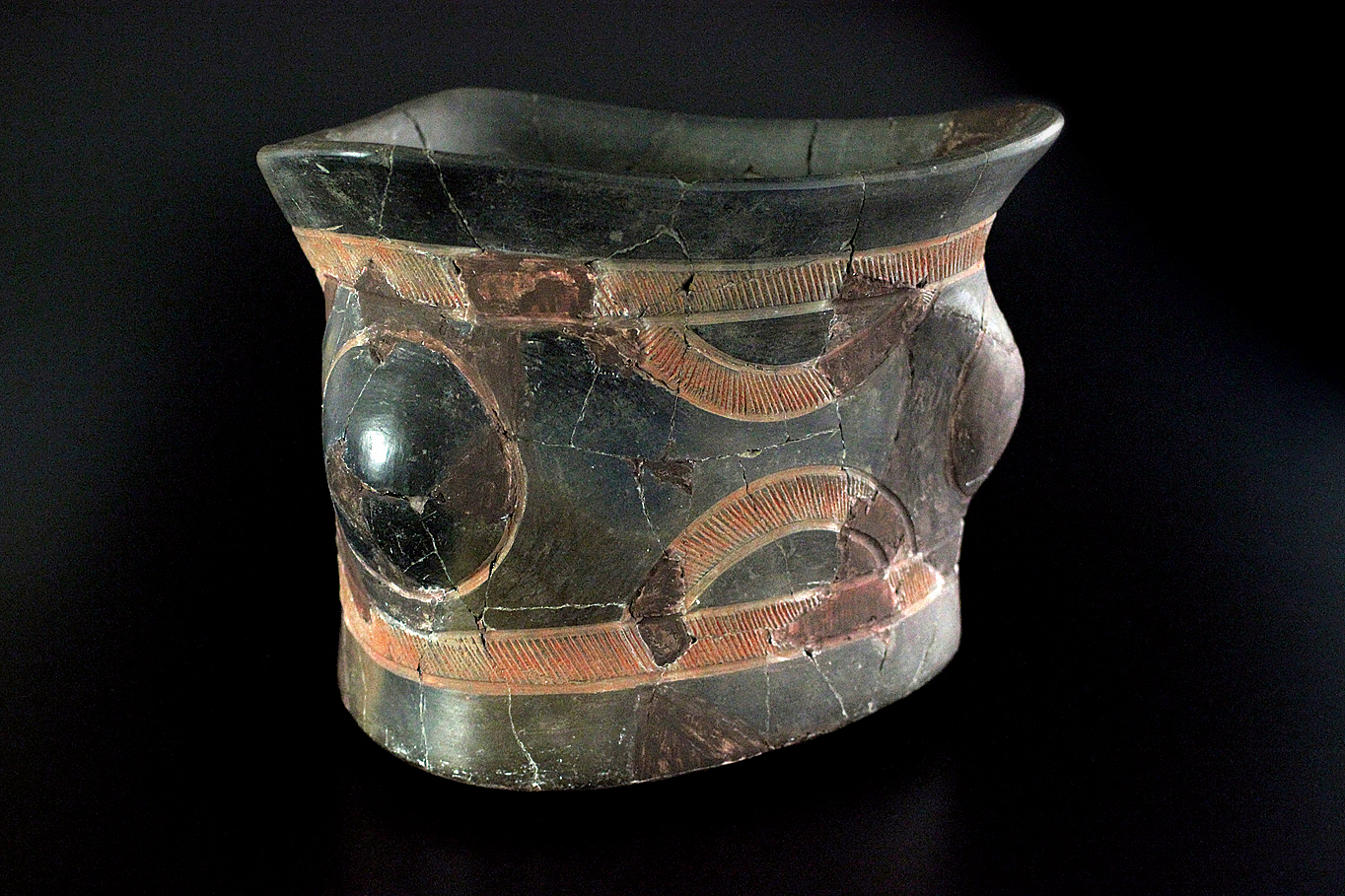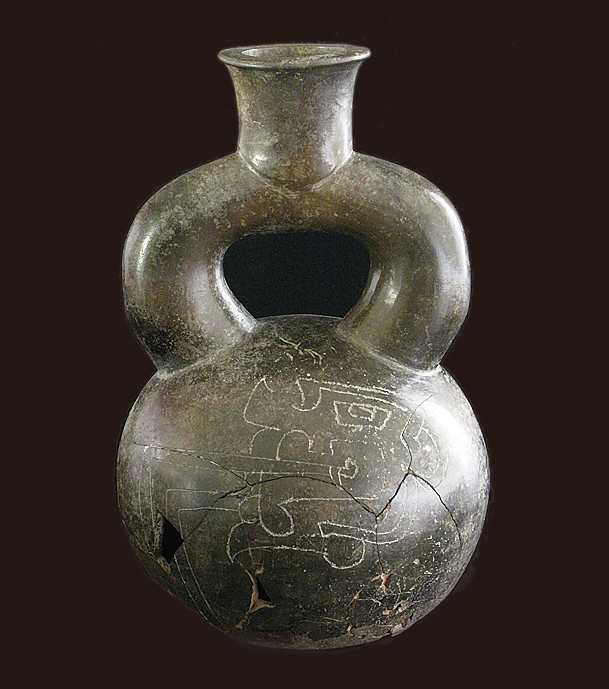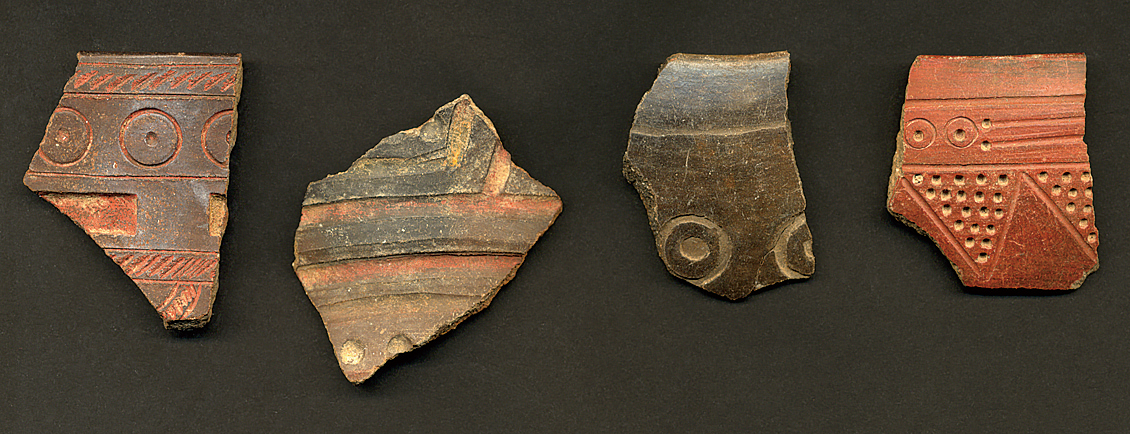G5
Pottery of the Andean Formative
Half a century ago, all the archaeological remains of the earliest ceramic culture of Peru were considered as the results of an influence of “Chavín culture” which originated from the highland site Chavín de Huántar. In the light of such an understanding, the brilliantly polished surface and stylized feline motif of this stirrup spout bottle could be regarded as features of Chavín style. However, today, the results of various investigations of diverse coastal sites since the 1970s reveal that trapezoidal form of stirrup and superficial fine-line incision are now regarded as features of an earlier coastal style than Chavín style. In 1960s, at the northern highland Kotosh site the archaeologists from the University of Tokyo discovered a building associated with Chavín style pottery, and in the lower levels they detected two other pottery styles earlier than Chavín. This triangular bowl from Shillacoto site, located 5 km away from Kotosh, is an example of Kotosh Waira-jirca phase vessels, one of the earliest pottery traditions in Peru. After concluding investigations at Kotosh, the University of Tokyo started new projects in other highland sites such as La Pampa, Huacaloma, Cerro Blanco and Kuntur Wasi. Due to the comparative analysis among these sites the chronological sequence of the early pottery cultures in the Peruvian north highlands has been established firmly. (Eisei Tsurumi)
References
加藤泰建・関 雄二(編)(1998)『文明の創造力:古代アンデスの神殿と社会』角川書店。
Onuki, Y (1972) Pottery and clay artifacts. In: Izumi, S. & Terada, K. (eds.) Excavations at Kotosh, Peru, 1963 and 1966, pp. 177-248. Tokyo: University of Tokyo Press.
Onuki, Y. & Inokuchi, K. (2011) Gemelos prístinos: el tesoro del templo de Kuntur Wasi. Fondo editorial del Congreso del Perú y Minera Yanacocha.



